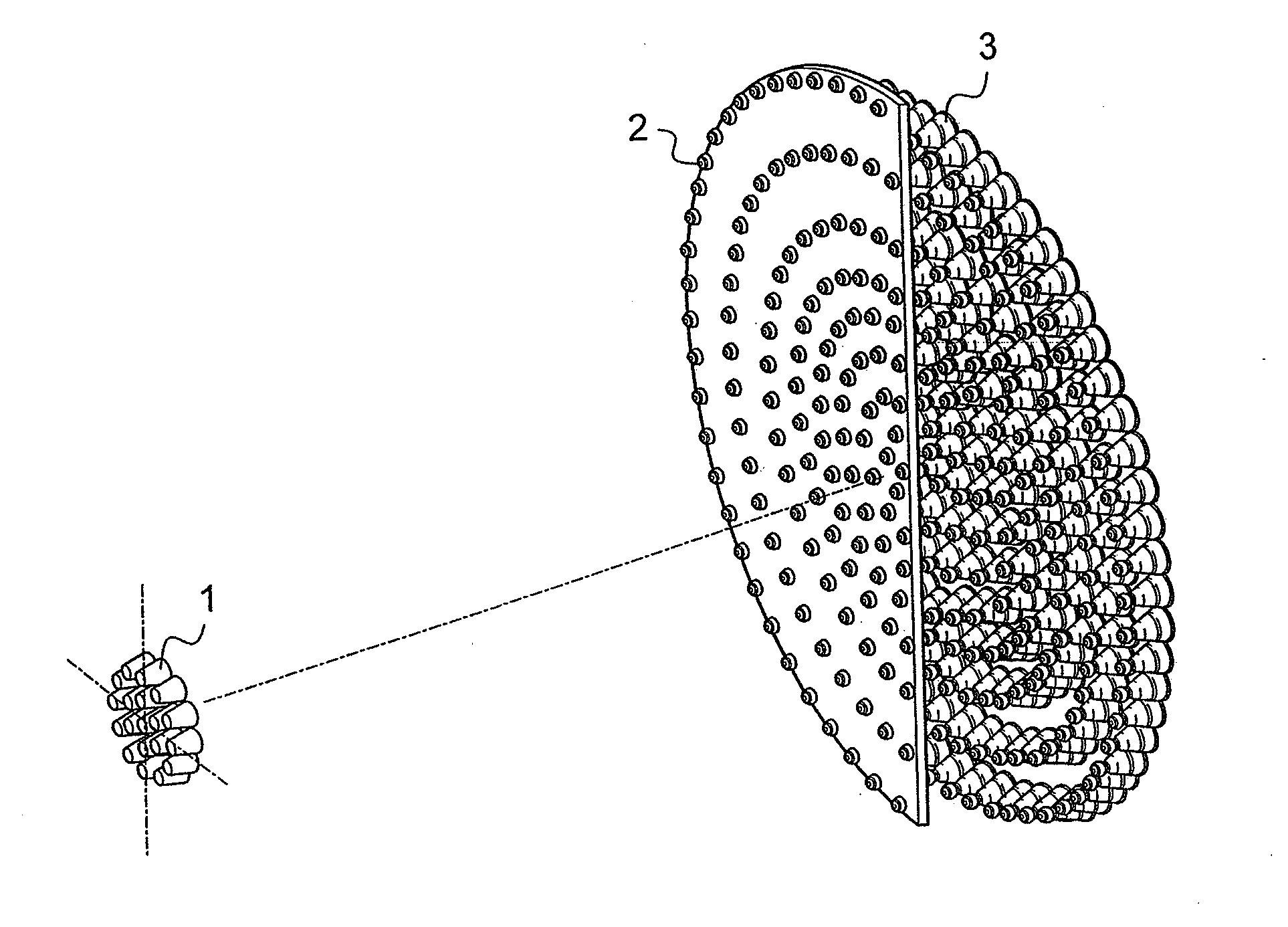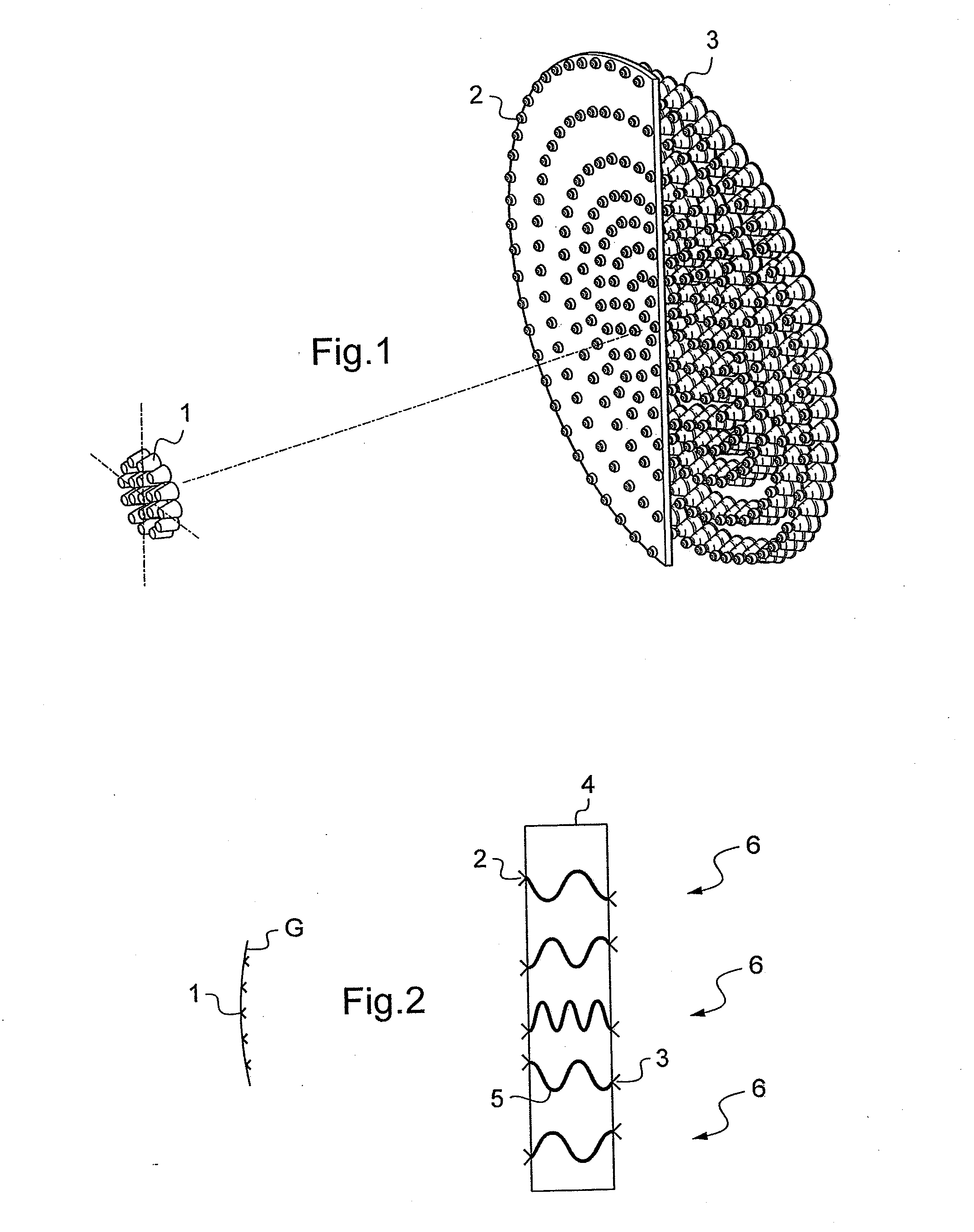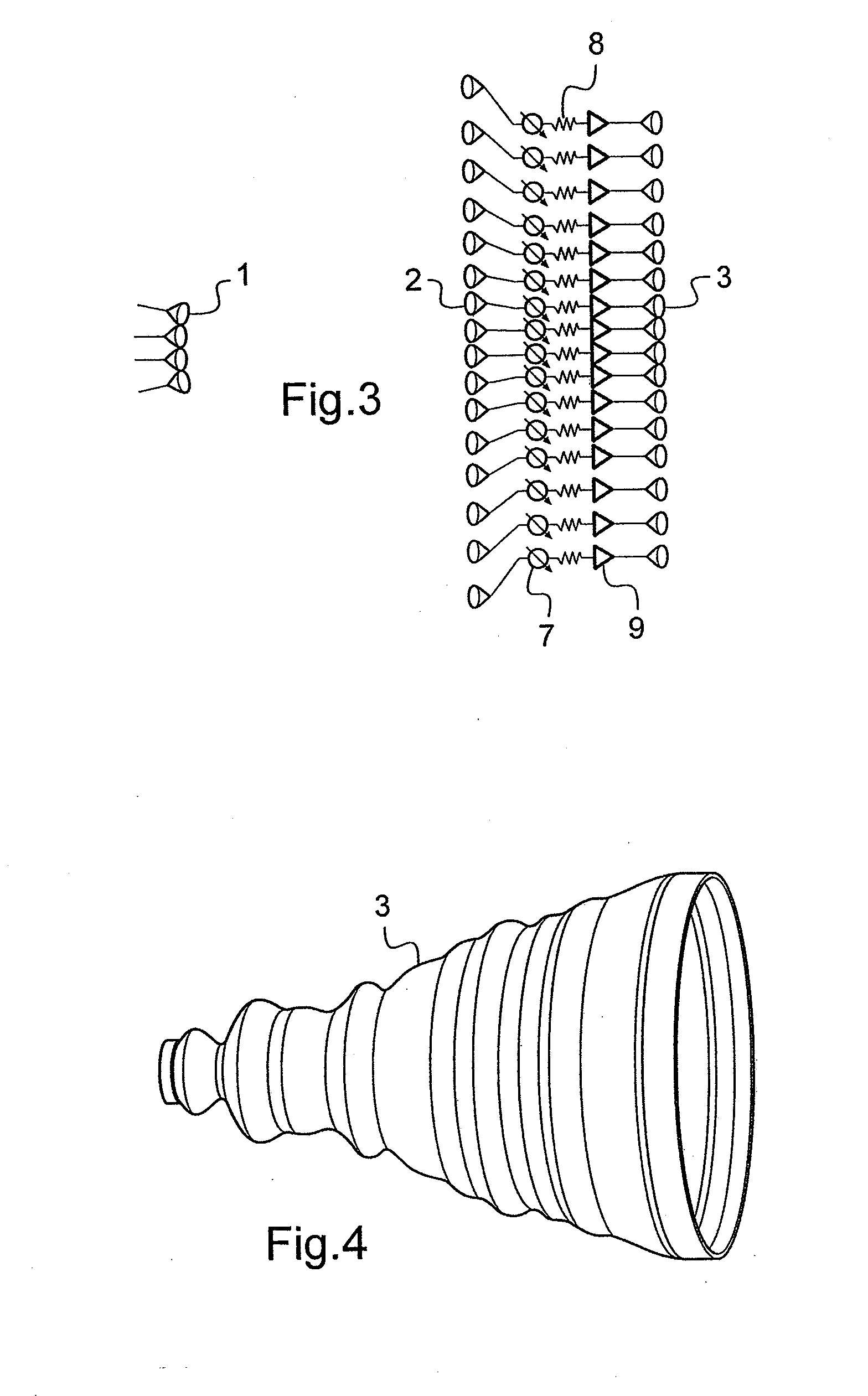Multibeam Active Discrete Lens Antenna
a discrete lens and active technology, applied in the field of multibeam antennas, can solve the problems of difficult manufacturing, heavy weight of conventional dielectric lenses, and difficult manufacturing, and achieve the effects of reducing volume, mass, cost and complexity, and improving radiative performan
- Summary
- Abstract
- Description
- Claims
- Application Information
AI Technical Summary
Benefits of technology
Problems solved by technology
Method used
Image
Examples
Embodiment Construction
[0041]For a better understanding of the present invention and the advantageous results obtained with respect to prior art, an exemplary block diagram of a generic passive discrete lens, working in reception, is shown on FIG. 1. While the radiating elements 3 of the front array form the radiative side of the lens, the elements 2 of the back array interact with the primary feeds 1 located in the focal zone of the lens. Each radiating element of the front array is interconnected to an homologue element of the back array through transmission lines 5 of different lengths such that an impinging plane wave 6 is focused in a point of the focal surface G of the lens where a primary feed capable of collecting the impinging plane wave energy is located.
[0042]Let ρ be the radial coordinate of a radiating element of the back array (ρ=0 at the center of the array), r the radial coordinate of the corresponding element of the front array and F the focal length of the lens. Then, as shown in the abo...
PUM
| Property | Measurement | Unit |
|---|---|---|
| Efficiency | aaaaa | aaaaa |
| Power | aaaaa | aaaaa |
| Diameter | aaaaa | aaaaa |
Abstract
Description
Claims
Application Information
 Login to View More
Login to View More - R&D
- Intellectual Property
- Life Sciences
- Materials
- Tech Scout
- Unparalleled Data Quality
- Higher Quality Content
- 60% Fewer Hallucinations
Browse by: Latest US Patents, China's latest patents, Technical Efficacy Thesaurus, Application Domain, Technology Topic, Popular Technical Reports.
© 2025 PatSnap. All rights reserved.Legal|Privacy policy|Modern Slavery Act Transparency Statement|Sitemap|About US| Contact US: help@patsnap.com



